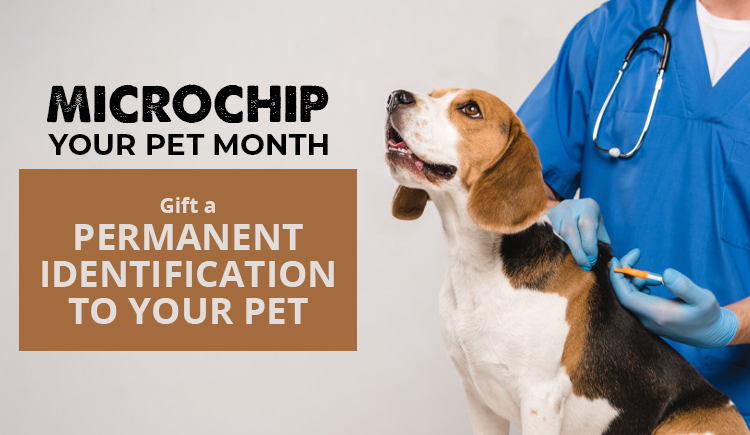
With the increasing cases of pets getting lost or stolen, protecting our pets is now more important than ever. Microchipping your pet is a fullproof way of ensuring that it reunites with you in case of any misfortunate events.
May is Microchip Your Pet Month and an excellent time to spread awareness about the importance of securing your pets with a microchip. This blog is our contribution to spreading more information about this life-saving procedure.
Why is microchipping necessary?
A microchip gives your pet a unique, permanent identification. This chip is first loaded with an identification number from the registry. This number is linked to your contact information. Then the chip is rooted inside their body. In case a microchipped pet is lost, one can easily get the unique identification number, and contact information stored in the chip by scanning the pet with a special scanner that is easily available at police stations, vet clinics, and animal shelters.
What is pet microchipping and how is it done?
Pet microchipping is the procedure of implanting a small, grain-sized chip into a pet’s body. The microchip acts as a permanent ID tag for a lifetime. Unlike dog and cat tags, here there’s no chance of the tag being lost since the chip is implanted inside the pet’s body.
The procedure of microchipping a pet only takes a few moments and is nothing different than giving a vaccine. The tiny chip is inserted between the shoulder blades of the pet using a syringe applicator trigger. After successful insertion, the pet is scanned to ensure that the chip is reading properly.
Important things to note about pet microchipping:
- The procedure is very simple and takes only a few minutes.
- Microchipping does not require surgery.
- No sedation or anesthetics are required during implantation.
- Microchipping is very safe and relatively pain-free.
- Pets do not experience any irritation or discomfort after insertion.
- The chip cannot fall out or become damaged.
- The process is affordable and costs only $50-$100.
- Microchips do not need any maintenance, care, or replacement.
Most pet parents prefer to microchip their pets at the time of spaying or neutering them when they are under anesthesia.
Read More- National Dog Anxiety Week – How to Help Anxious Dog
Can you detect a pet’s location with a microchip?
No. Microchips do not work like GPS trackers. For the chip to detect location, it requires a continuous source of energy, just like a battery. Since this setup is impractical for pets, microchips are designed to store a unique identification number through which important contact information including your name, address, phone number, etc can be retrieved.
If a pet is separated from the owner, anyone who has found it can take it to the nearest police station or animal shelter. The pet will be scanned with a microchip scanner and all the information stored inside it can be retrieved. Thus, this greatly increases the odds of your pet’s reunion with you.
May is Chip Your Pet Month!
Our pets are our families, our world. Microchipping them drastically increases their chances of reuniting with us if they fall into the wrong hands or get lost while meandering a little too far. This May, book a microchip appointment with your vet and save their life with a permanent identification tag.
Once your pet is microchipped, always keep your contact information updated by contacting your vet’s clinic. And, do not forget to share this article with your friends to spread the word.

